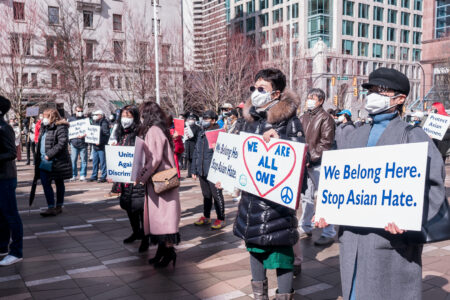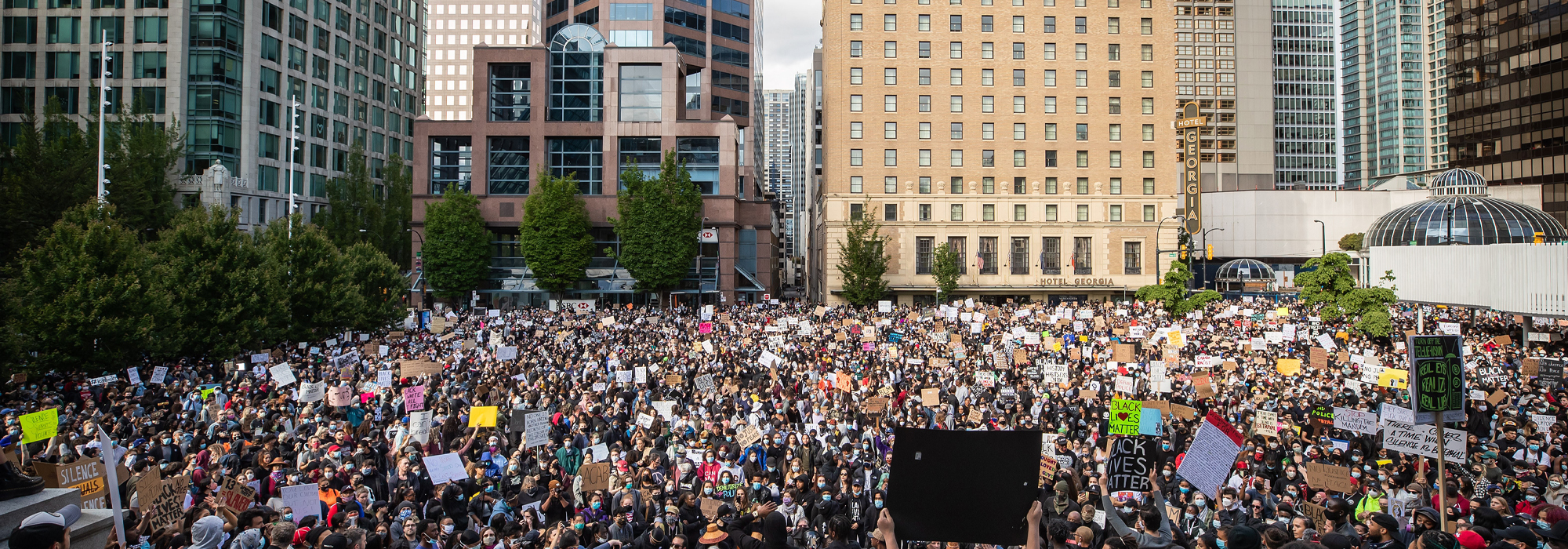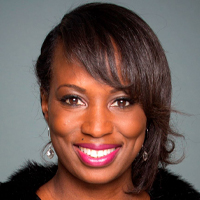
Over the past several days, in the midst of the protests related to the killing of George Floyd and death of Regis Korchinski-Paquet in Toronto, many people have asked me (and other Black people) this question: what does the government do now? What are the solutions to racism in Canada, Celina?
As much as it frustrates me, and likely other members of the Black community, to be recipients of racism and still be asked to come up with solutions, I will acquiesce to this request, and provide some insights for government colleagues.
First, acknowledge and understand that racism exists. And not just the capital “R” racism that is consuming all the oxygen in our media, but the daily “death by a thousand cuts” microaggressions that Black, Indigenous and people of colour face every day. This is the truth. And there is no reconciliation without truth.
Next, provide adequate, intentional and sustained funding to community programs and organizations that empower and uplift communities. Don’t make announcements about combatting “guns and gangs” in the Jane and Finch area of Toronto while handing over money to law enforcement for the further over-surveillance of an already stigmatized community.
While the area has its fair share of problems, the community has also had a tremendous amount of success – notably highlighted in the film Mr. Jane and Finch (about community advocate Winston LaRose), which recently won a 2020 Canadian Screen Award for best social/political documentary program.
There are organizations like Zero Gun Violence run by Louis March, Trust 15 run by Marcia Brown, and Generation Chosen run by Dwyane Brown and Joseph Smith. Each of these organizations has been working tirelessly to help uplift and empower our youth. Itah Sadu, owner of A Different Booklist bookstore, has been raising funds for a cultural centre for the community. All of these individuals are tired of jumping through hoops to get funding. They have demonstrated their ability to effect change and have sustained their businesses with proven results. Our governments could find ways to help them scale up and grow (in the same way they are helping Canadian commercial entities and projects to scale up). This should extend to the government’s procurement processes, as Black-owned businesses are often left out of the conversation, off the list and fail to receive invitations to trade missions.
Additionally, if governments are going to make announcements about investments in Black communities, they should do the math first. Budget 2018 dedicated $19 million to addressing challenges faced by Black Canadians. Such efforts include $10 million over five years to provide more culturally focused mental health programs to the Black Canadian community and $9 million over five years to enhance community supports for Black youth. Additionally, $23 million was allocated to increase multiculturalism funding. Part of the funds were to be used to conduct cross-country consultations on a new anti-racism approach, which will find new ways to collaborate and combat discrimination.
But when you do the math on these numbers, they don’t make sense, and they certainly do not speak to Black lives mattering. Let’s use the example of $10 million over five years for mental health programs (or $2 million per year). There are 1.2 million Black people in Canada. For ease of this analysis, let’s make this number an even million. If we use the current statistics of mental health challenges impacting one out of five people, we can hypothesize that approximately 200,000 Black Canadians are impacted by mental health issues. This budget is essentially allotting $10 per year per person affected by mental health ($2,000,000 divided by 200,000). How TF is that supposed to do anything? How is that going to have impact? Was this investment intentional or some sort of window dressing? Have we been took? Hoodwinked? Bamboozled? Led astray? Run amok?
However, doing the math is only useful if you are putting forward good policy. And please do not let “how well a particular issue will poll” get in the way of good policy. If you are considering how good policy will impact your ability to get re-elected, find a new line of work, because you do not deserve to represent the people who need you the most.
So, here are some policy changes that can be made. They are suggestions, and not in any particular order of priority. They all should have been done a long time ago. (Most are listed on my Top 43 things to do in the 43rd Parliament tweet thread dated December 4, 2019).
Let’s start with the expungements of criminal records for those folks, predominantly Black and Indigenous, who have been charged with marijuana possession. The government has introduced pardons; however, the over-surveillance of Black and Indigenous communities, which is a violation of our human rights, has led to a disproportionate over-representation of these groups in the prison system. It is time to right the wrong. And while you are at it, get rid of mandatory minimums, too.
Immigration patterns for the approvals of visas from Black and Brown countries into Canada is abysmal. This was a topic of countless conversations during the 42nd Parliament; however, very little was done to improve the situation. The government should investigate immigration practices that discriminate against people from these countries and review visa lifts. In the interim, they should increase the number of mobile biometric units, which track information necessary for a visa application, available in Caribbean and African countries.
Domestically, if representation matters, increase the number of Black people in Cabinet and Black people in Governor in Council appointments. Name an experienced Black person to head the new Anti-Racism Secretariat within the department of Canadian Heritage and increase the number of Black political staffers in prominent positions. Honour the spirit of my private member’s Bill C-468, and remove the barriers that exist for Black federal employees to be promoted within the federal system, especially in deputy minister and assistant deputy minister positions.
Lastly, as a former entrepreneur in the area of research, I was heartened that budget 2018 dedicated $6.7 million to create a new Centre for Gender, Diversity and Inclusion Statistics at Statistics Canada. This centre will work to improve our understanding of the social, economic, financial, and environmental issues facing groups, including Black Canadians. This new information will help organizations and leaders better understand the barriers faced by the community and will inform future evidence-based policy. So, start collecting and analyzing race-based data, especially around COVID-19, to properly use our limited resources strategically.
Now, I know what you are going to say. “You were there, Celina. If this was a problem with government policy and spending, why didn’t you do something about it instead of complaining now?” And with this statement, you would be partially correct. I was there during the time the announcements were made in 2018 around anti-racism program and funding. But I was not a part of the conversations or decisions involved in the outcome. In fact, meeting attendees were told not to tell anyone about the meetings’ logistics or discussions. They were especially kept secret from me. Additionally, after the announcement was made and I made my frustrations known, I was told that I needed to “get on board” because it looked bad that I was “bad mouthing” the government and the related stakeholder group that had been consulted.
Herein lies what is the biggest impediment to collective progress. Exclusion. The exclusion of voices of dissent and unusual suspects around the table. The ones who will speak truth to power, call out your bullshit and hold you accountable. The exclusion of ideas that are considered “too extreme” because you are too lazy to see the other side of the coin.
Talking about defunding police is apparently an absolute non-starter, though it has been skillfully addressed by women like Sandy Hudson and Robyn Maynard for quite some time. Their core idea is that if you reduce funding for policing, you can increase funding that uplifts communities and you can invest in mental health supports. Are those also non-starters? I hope not.
Lastly, and most hurtful, the deliberate and intentional exclusion of marginalized groups, and in particular, Black female voices from conversations. Everyone thinks they want the Black woman in the room to fill the diversity quota (Black person – check; female – check), but do they really want her opinion? Do they really want her to tell the truth? Or, dare I say, tell them where they are wrong?
If diversity is truly going to be our strength and #BlackLivesMatter is going to be a reality beyond the hashtag, our governments need to be serious and intentional about policy that is inclusive and funding that is sustainable. We are beyond the point of community consultations and rhetoric. It is time for accountability and action. And both need to start now.
Photo: Thousands of people gather for a peaceful demonstration in support of George Floyd and Regis Korchinski-Paquet and protest against racism, injustice and police brutality, in Vancouver, on May 31, 2020. THE CANADIAN PRESS/Darryl Dyck









